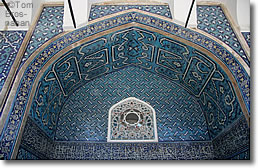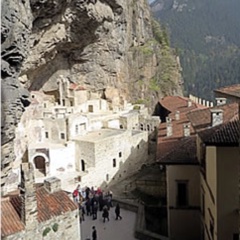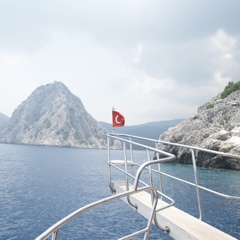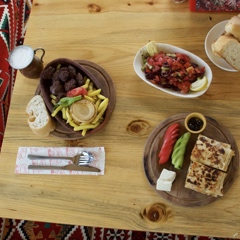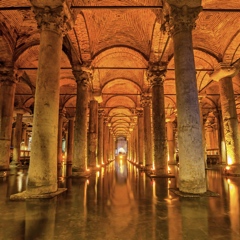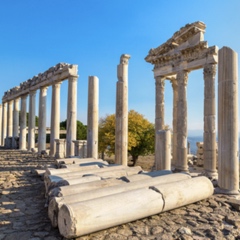The Tiled Pavilion (Çinili Köşk), next to the Istanbul Archeological Museum (map), is the oldest Turkish secular building in Istanbul.
Sultan Mehmet the Conqueror built a residence here in 1457, shortly after he took the city from the Byzantines (1453), but the present building dates from 1472.
An oriental-style pavilion lavishly decorated with the finest turquoise and dark blue tiles of the time, it was conceived as a private residence for the sultan, who liked to get away from the confines of nearby Topkapı Palace and watch his sons play cirit (the Central Asian horseback game akin to polo) with the palace staff. The sultan could sit in the front portico of the pavilion and watch the games.
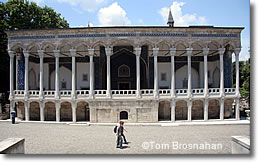 The marble-columned facade of Istanbul's Çinili Köşk.
The marble-columned facade of Istanbul's Çinili Köşk.
In the 19th century the sultan built his Archeological Museum (Eser-i Atika Müzesi) next to the Çinili Köşk. Now the pavilion is officially the Museum of Turkish Faïence, a part of the Istanbul Archeological Museums. It can be visited along with the other museum buildings.More...
Inside, the pavilion has a cruciform plan, with rooms or eyvans (open niches) at the points of the cross and a small dome over the center of the cross.
Exhibits of Turkish tiles from the best periods fill the display cases and are mounted on the walls. Whether you have an interest in tiles (as I do) or not, you must see this graceful building.
Right beside the Çinili Kösk a shady garden café is set up amidst a forest of broken statues and other hardy marble monuments, the perfect place to enjoy a cool drink on a hot summer day before continuing your explorations of the Archeological Museums or the other sights of Sultanahmet.




